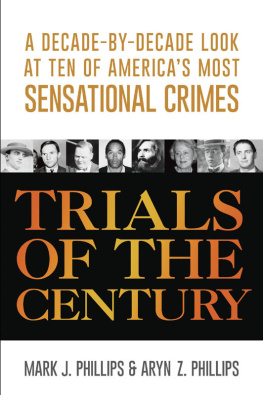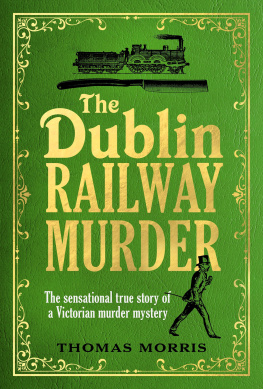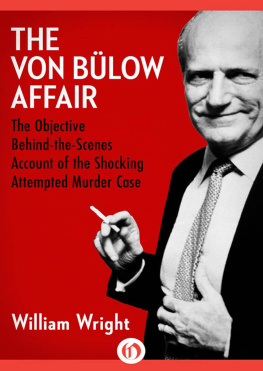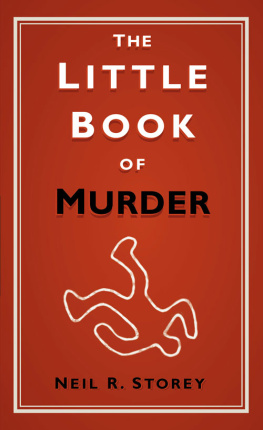There is often in effects what was never entered into intention
Examiner, 12 July 1840
Introduction
Early in the morning of Wednesday, 6 May 1840, on an ultra-respectable Mayfair street one block to the east of Park Lane, a footman called Daniel Young answered the door to a panic-stricken young woman, Sarah Mancer, the maid of the house opposite. Fetch a surgeon, fetch a constable, she cried: her master, Lord William Russell, was lying in bed with his throat cut.
It was thought at first to be a suicide that is what the young Queen was told at noon but later that day, when her Secretary of State for the Colonies, Lord John Russell, arrived at Buckingham Palace, it was with the melancholy news that his uncle had in fact been murdered, his throat cut so deeply that the windpipe was sliced right through and the head almost severed. The motive appeared to be robbery, as the drawing room of Lord Williams house had been turned upside down and a pile of valuables had been discovered near the front door. But the brutality of the crime was what struck the twenty-year-old monarch: she wrote in her diary. It is almost an unparalleled thing for a person of L d Williams rank, to be killed like that.
Lord Williams rank did indeed make him a notable corpse, however quiet and unobjectionable a live man he had been. Third and youngest son of the Marquess of Tavistock, he had passed the thirty years since the death of his wife mostly in travel and connoisseurship. He was known at the great salons of Holland House and Gore House, the Royal Academy and at the palace itself, but his status and means were nothing to those of his nephew Francis, the 7th Duke of Bedford (owner of Woburn Abbey and its priceless art collection), nor of his nephew Lord John Russell, who was one of the most influential politicians in the land. The house in Norfolk Street where Lord William lived alone was modest by Mayfair standards and he kept only three servants, a maid, a cook and a valet. Two other employees, a coachman and groom, lived off the premises.
Who would want to butcher in his sleep this unobtrusive minor aristocrat, with his afternoons at Brookss and his restrained widower habits? In the newspaper articles that were about to appear, no one could find much to say about Lord Williams life and unoffending days as a Continental traveller and absentee MP. Aged and respected he was called in The Times, like a cheese.
But as details emerged of the murder and the bungled burglary that seemed to have provoked it, fears grew that they might be symptoms of something more widespread and insidious. For, if such a person as Lord William was not safe in his bed, in the most exclusive and privileged residential enclave in the country, who could be? Such was the panic provoked by the crime, one newspaper declared, that , and more particularly aged persons living as the deceased had done in comparative retirement, entertain, perhaps for the first time, a feeling of insecurity.
These were nervous times for the ruling classes. London in 1840 was teeming with immigrants, the unemployed, and a burgeoning working class who were more literate and organized than ever before. The winter just past had been one of mass rallies by Chartists demanding universal suffrage that in some places had turned into bloody riots, and Lord Brougham had warned at the opening of Parliament in January that the country might in fact be on the brink of revolution, so marked was the change taking place in the disposition of the common people towards
? some people wondered. Class boundaries were changing rapidly; had he been chosen as a victim for what he represented as much as what he owned?
The crime soon had all of London talking, from the thieves dens of Soho to Buckingham Palace itself, and for the first time, perhaps, politicians werent the only people being blamed for undermining the status quo and stirring up a volatile underclass. As the investigation into Lord William Russells death proceeded, several of the leading writers of the day were alarmed to find themselves suddenly under fire for having contributed to the by writing fictions that glamorized vice and made heroes of criminals. Given the chance to mould the taste of a mass audience, many of them were now accused of pandering to the lowest, with books full of violent excitements and vulgarity that could all too easily lead susceptible readers astray.
One bestselling book in particular did more than any other to inflame this panic about low culture, but to see how closely it was linked to the gory events in Norfolk Street, we need to return to the evening of Lord Williams murder and follow his movements in his last hours of life.

1.
A Last Walk
At six oclock on the evening of 5 May 1840, a spare old gentleman of medium height and distinguished but unshowy appearance could have been seen walking a large white dog along Norfolk Street in Mayfair, just a few yards away from Hyde Parks north-east corner. He didnt go far, nor proceed very fast: Lord William Russell was asthmatic and suffered from a hernia that made walking difficult. He was heading towards a house just off Grosvenor Square, to combine a message for an upholsterer, Mr Barry, with his routine airing before dinner.
He was not in the best of moods, having had to reprimand his valet an hour earlier for forgetting to send the carriage to the club. What use was keeping a carriage if you had to come home in a hackney cab? The whole business of maintaining an address in London was bothersome, much more trouble than the old life of moving from place to place on the Continent, living for long periods in the houses of friends or relations, or staying in hotels. But his travelling days were over. , he had told his nephew three years earlier, and have at last made up to set down quietly in London like an old Hack turned out to grass for life.
The place where he had settled, a terraced townhouse at 14 Norfolk Street, was a far cry from Woburn Abbey, the family home of the Russells, where Lord William had been brought up and where, until his death in 1839, his elder brother, John, had kept one of the to distinguish him from his nephew, a well-known diplomat.
There had been advantages, of course, to existing on the perimeters of a great and powerful clan: as long as he didnt develop outrageous habits and run up disproportionate debts, Lord William had always been protected by family cash and welcomed at the ducal home. Family patronage assured him the seat in Parliament that he held for four elections from the age of twenty-two, but it was just as well that his charming bride, Charlotte Villiers (eldest daughter of the Earl of Jersey), had had a fortune of her own. They married in the year of the French Revolution, 1789, and lived abroad for much of the time, in Italy, Germany and Switzerland. Lady Charlotte bore him seven children, four boys and three girls, and her death in 1808, aged thirty-seven, stunned him. In the long decades since, Lord William always kept a miniature portrait of her, painted on ivory, in his dressing case, and until a few weeks previously had carried on his person at all times a gold locket containing a strand of his dead wifes hair. The loss of this locket on a recent visit to Richmond had upset the old man greatly. It had been his most treasured possession.
In the thirty years since Lady Charlottes death, his habits had become increasingly solitary; he travelled a lot, studied artworks, and advised his brother on which sculptures and paintings to buy for the seemingly endless halls of Woburn. His fine family might have been a comfort to him, but three of his four sons died young: the second eldest, Captain George Russell RN, died of fever in the West Indies in 1825; the eldest, Francis, a promising soldier, became , Lord Melbourne thought). Thus of Lord Williams seven offspring only two remained close by: his younger daughter Eliza, who had been brought up at Woburn by her uncle and aunt and had married her cousin; and his only remaining son, Mr William Russell, Attorney General of the Duchy of Lancaster (known as Counsellor William in the family).
Next page













